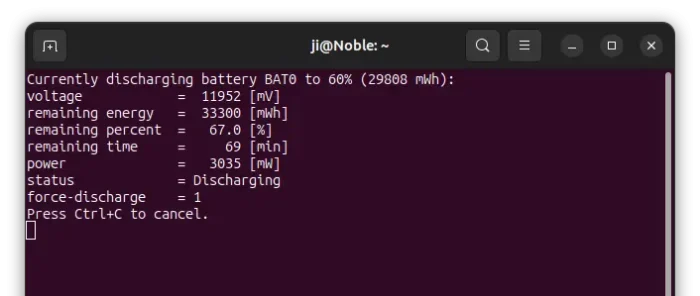TLP, the laptop battery power saving tool, released new 1.8.0 version few days ago!
The new release add battery charge threshold support for new laptops, including Chromebooks, DELL, and Framework laptops.
With Linux Kernel 6.12 or later, TLP 1.8.0 finally supports for setting start and stop battery charge threshold for DELL laptops.
With Linux Kernel 6.12.8 or later, the release also added stop threshold and recalibration support for Framework laptop 13/16 Intel/AMD, and Chromebooks modded with chrultrabook/coreboot custom UEFI firmware. While, there’s also start threshold support for the latest Chromebooks with EC firmware v3.
For ThinkPads, the release also added support for discharging to given battery percentage level. For example, discharge the default battery to 60% with command sudo tlp discharge BAT0 60.
Other changes in the release include:
tlp-stat -p -vcommand to show boost per core, while amd-pstate needs kernel 6.11 or later.- Deprecat the RADEON_POWER_PROFILE_ON_AC/BAT option, which is used for control the clock speed of AMD GPU (ATI legacy hardware).
- Fix incorrectly running in battery mode for desktop PC when no power sources detected.
- Discover all coretemp sensors in
tlp-stat -toutput. - Ensure wifi activation upon resume if LAN gets disconnected in suspend.
For more, see the official release note in the Github releases page.
How to Get TLP 1.8.0 in Ubuntu
TLP has an official PPA so far supports Ubuntu 22.04, Ubuntu 24.04, and Ubuntu 24.10.
Simply press Ctrl+Alt+T to open up a terminal window, then run the commands below one by one to add the PPA & install TLP (1.8.0 so far):
sudo add-apt-repository ppa:linrunner/tlp
sudo apt update
sudo apt install tlp
After installed the tool, either restart your computer/laptop to let it run automatically, or run sudo tlp start command to start it without reboot.
TLP is running silently in the background, and default settings are already optimized for battery life, so you can just forget about it afterwards.
But if want, user may edit the /etc/tlp.conf file or use tlp, tlp-stat, etc commands for custom settings. See the official documentation for details.















